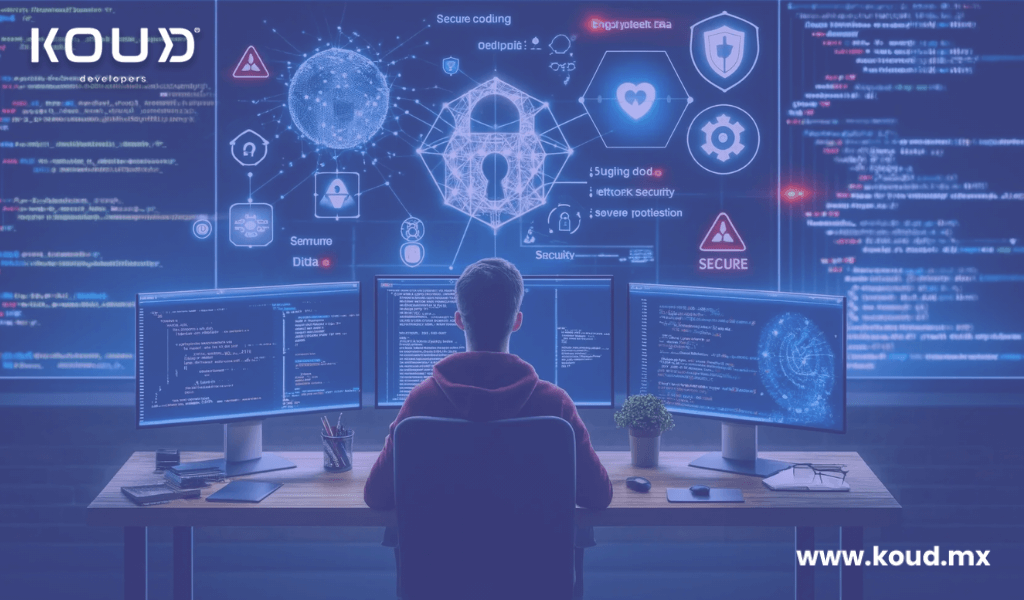The Importance of Cybersecurity in Software Development
In a hyperconnected world, software development can’t be limited to functionality and performance—security must be integrated from the very beginning. From my experience managing development projects, I’ve seen how ignoring cybersecurity can compromise not just a system, but an entire company’s reputation. In this article, I explain why cybersecurity is vital in software development and how to apply it correctly to protect users, systems, and businesses.
What is Cybersecurity?
The Cybersecurity and Infrastructure Security Agency (CISA) defines cybersecurity as the art of protecting networks, devices, and data from unauthorized access, ensuring the confidentiality, integrity, and availability of information. From the days of the Creeper virus to the modern use of artificial intelligence to prevent attacks, cybersecurity has evolved into a complex, essential, and dynamic discipline.
Why is Cybersecurity Crucial in Software Development?
Developers face an environment where cyberattacks are increasingly sophisticated. Ignoring security from the early stages of the Software Development Life Cycle (SDLC) can result in costly vulnerabilities. In my experience, integrating proactive security measures not only reduces risks but also improves the quality of the final product.
Key Benefits:
- Protects the company’s reputation
- Reduces risks and incident-related costs
- Ensures user privacy
- Helps comply with regulations like GDPR, HIPAA
- Provides peace of mind to the business and its clients
Stages of Secure Software Development (Secure SDLC)
1. Identifying Security Requirements
This phase involves analyzing potential threats and risks. From identifying malicious actors to defining clear security objectives, this step ensures a solid foundation for the system’s design.
2. Secure Software Design
This includes practices such as secure architecture, encryption, authentication, and component isolation. Personally, I always insist on cross-reviewing the design to catch flaws before coding begins.
3. Secure Development Practices
- Input validation
- Session control
- Error management
- Use of up-to-date libraries
- Compliance with guides like OWASP
I’ve worked with tools like Veracode and Checkmarx for static code analysis, which detect vulnerabilities before they reach production.
4. Security Testing and Deployment
In addition to functional testing, code must be tested against attack scenarios. This includes penetration tests, authentication checks, and encryption validations. From my experience, this phase is critical to avoid post-launch surprises.
5. Ongoing Support and Maintenance
The job doesn’t end after launch. Incident monitoring, patching, and team training on emerging threats are continuous tasks. Cybersecurity is a process, not a one-time event.
Best Practices for Secure Development
- Security training for the entire team
- Static and dynamic code analysis
- Use of secure and updated frameworks
- Adoption of secure coding standards (OWASP, ISO/IEC 27001)
- Proactive vulnerability management
- Automated security testing
Collaboration Between Development and Security Teams
One of the keys to secure software is smooth communication between developers and security experts. In the projects I’ve led, involving the security team from the design phase has significantly reduced the number of critical errors in production.
Empresa
- Nosotros somos
Somos una empresa mexicana con más de 12 años de trayectoria en la industria
Servicios
- Desarrollo de Software a la medida
- Staffing TI
- Headhunting TI
Contacto
- +52 1 33 2342 9770
- letskoud@qa.koud.mx
- Av. Patria 2085 int. 175 piso 1 puerta de hierro Zapopan Ja. 45116

